A guide to umami-rich seaweeds, algae and other edible plants of the sea.
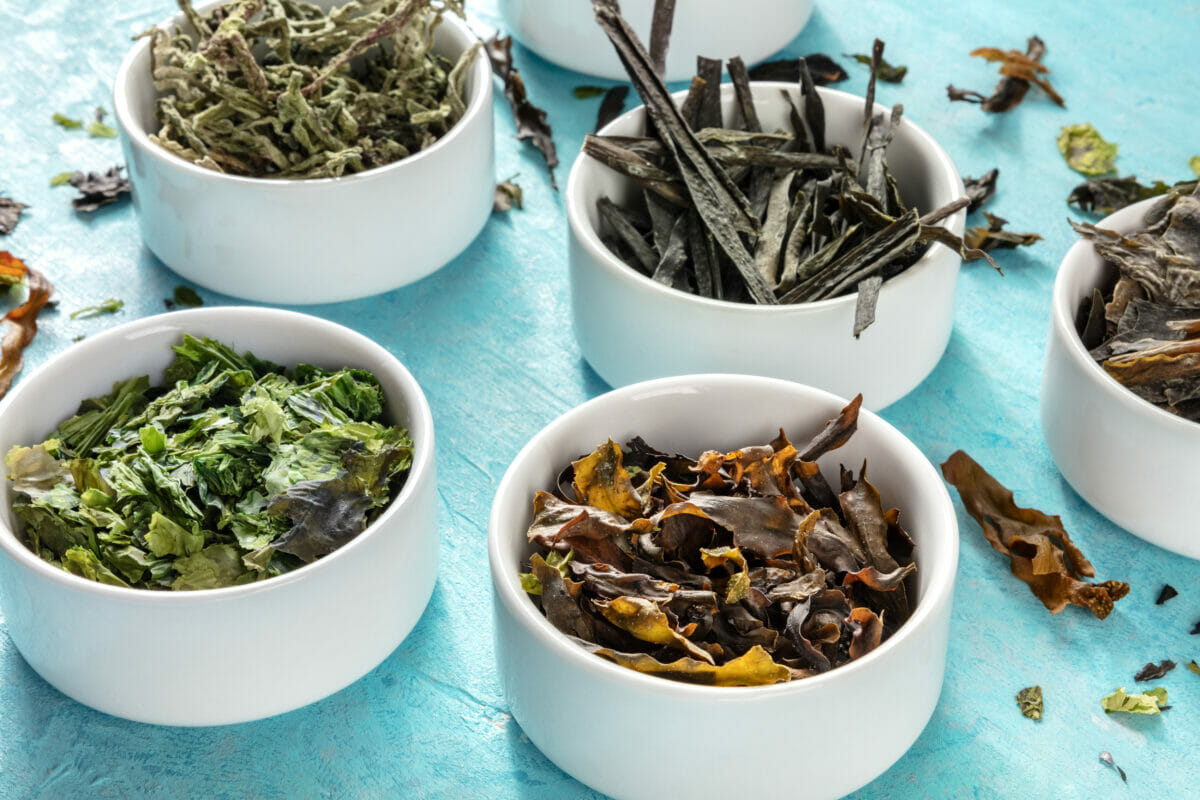
Whoever said your leafy greens needed to be sourced only from the soil?
Although they’re a longtime staple of many Asian cuisines, sea vegetables have been increasing in popularity in other parts of the world, becoming more prominent on restaurant menus and in home kitchens. Renowned chefs such as Enda McEvoy of Loam in the UK and Dan Barber of Blue Hill in New York have been utilizing seaweed in their dishes. Companies such as Blue Evolution have created products such as kelp popcorn and seaweed pasta, while meat alternative brand Akua recently introduced a kelp burger.
And there are a lot of signs pointing to the fact that sea vegetables could become a key part of our diets in the near future. Earlier this year, Modern Farmer reported on underwater kelp gardens becoming a centerpiece of ocean farming to pave the way for a more sustainable future.
In general, sea vegetables are full of vitamins and minerals such as potassium, iron, calcium, fiber, iodine and amino acids. They also have the ability to soak up to five times more carbon than land-based plants. And with micro nutrients declining in soils due to factory farming and climate change, plants that grow in the ocean could become a more reliable option for produce.
For some interested in this trend, however, drifting into unfamiliar food territory can feel overwhelming. Not to worry. Here’s a list of eight plants from the sea with everything you need to know about them.
As you mull through the following choices, please note that we have selected vegetables you can easily find at Asian markets, your local grocer or health food store, as well as larger retailers. Sea vegetables are most commonly sold in dried form, but they are easy to rehydrate and work with.
Kombu
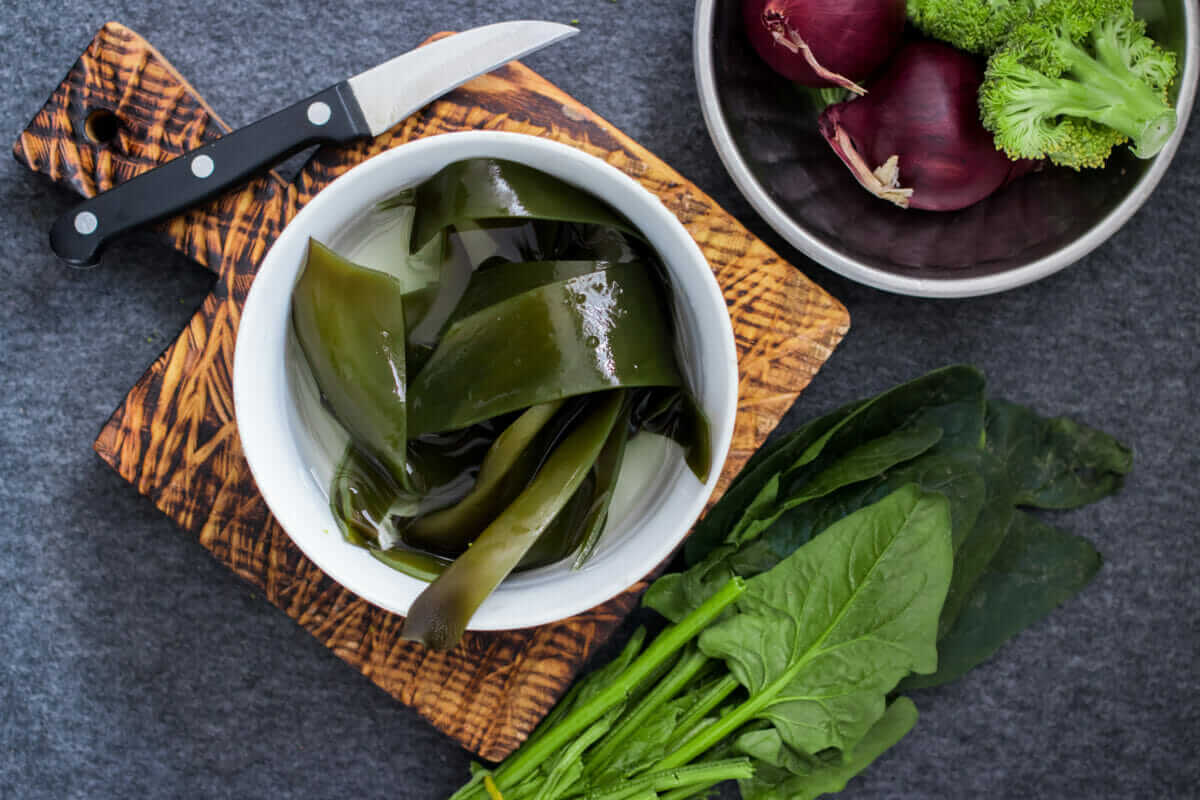
Photo by Viktor Kochetkov, Shutterstock.
Kombu is a Japanese version of kelp that grows on the coasts of Japan, Russia, China, Tasmania, Australia, South Africa and the Scandinavian Peninsula as well as western regions of North America such as California and British Columbia.
This slippery sea vegetable has been described as having a briny, mushroom-like umami flavor, but it is tougher and thicker than many other types of seaweeds. Kombu is best known for being a staple ingredient in the Japanese soup stock, dashi. We suggest adding it to soups or stews, as seen in this kombu chicken soup with carrots and mushrooms or this creamy white bean stew with parmesan. It can also be pickled, dried or consumed fresh in a salad.
Wakame
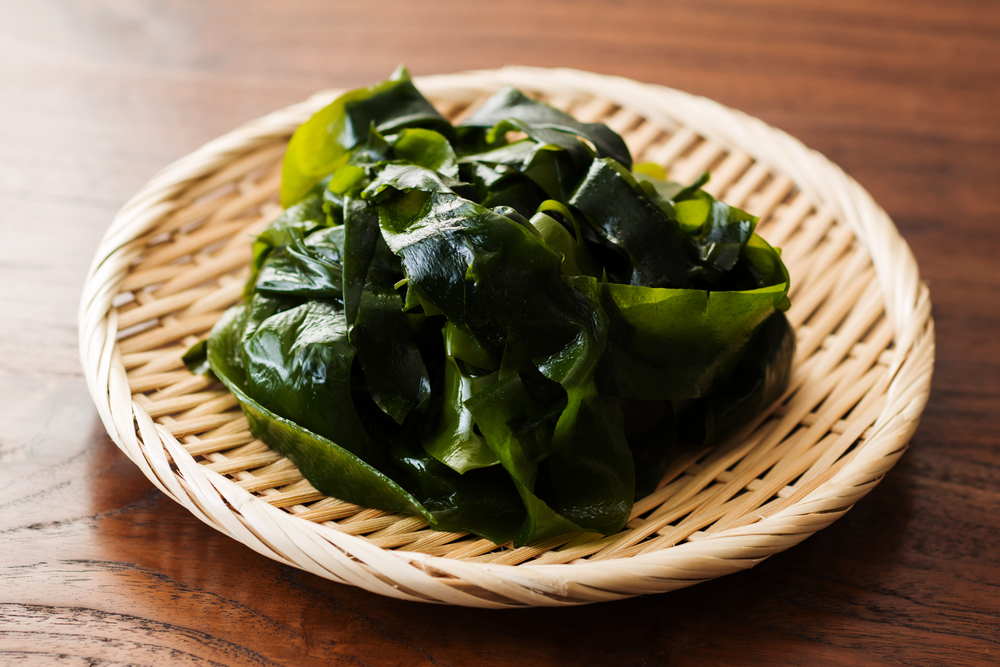
Photo by K321, Shutterstock.
Meet wakame, a type of algae native to coastal Japan, China, Korea and Russia. It is also found in cold temperate areas of the Northwest Pacific ocean.
This plant, also known as sea mustard, is recognized for its silky smooth texture and umami flavor that has a slight sweetness. It’s commonly used in miso soup. It can also be used in curries as a base, as seen in this tofu yellow curry. But because of its delicate texture, wakame pairs well in salads with ingredients that have a bit more crunch, such as this vegan cucumber salad or this confetti salad with black sesame dressing.
Wakame is typically sold in stores in a dehydrated form. You can revive it by soaking it in a dish of warm water for 10 to 15 minutes. And if you have only made a small dent in the package you have bought, no need to worry because dehydrated seaweed can keep for a number of years.
Arame
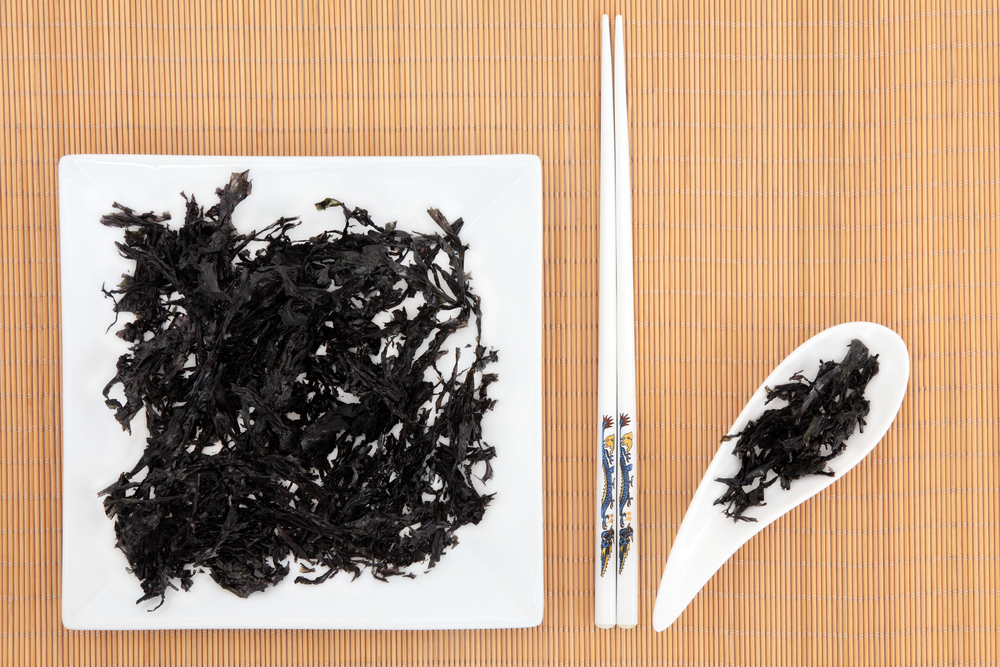
Photo by marilyn barbone, Shutterstock.
Arame is a long, wiry, dark brown kelp that is native to temperate climates around the Pacific Ocean. Typically, it is sourced from the shores of Shima in Japan. It has a sweet, mild flavor and is tender in texture. Because of this, it is one of the more versatile seaweeds that can be used in a variety of recipes such as this brown rice dish with vegetables, this spicy tahini sauce and soba noodles stir fry or this arame pasta minestrone.
Like wakame, it is usually sold dehydrated. To restore it, place it in warm water for five to 10 minutes.
Dulse
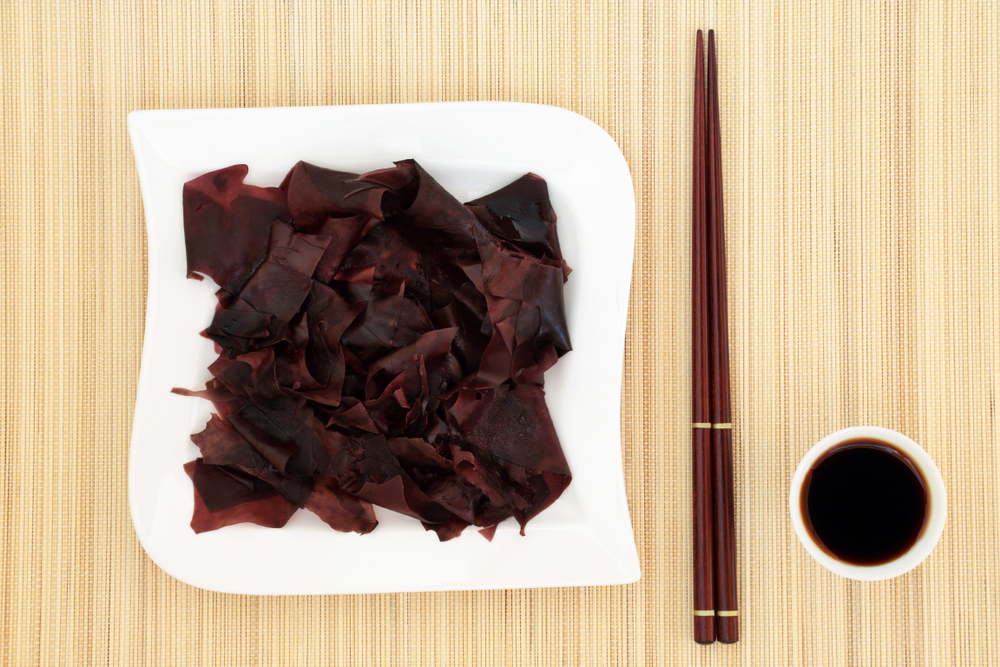
Photo by marilyn barbone, Shutterstock.
Dulse is a type of seaweed, recognized by its ruddy, red to dark purple coloring. It largely grows along the northern rocky coasts of the Atlantic, Pacific and Arctic oceans. However, it has been popping up in warmer temperate areas as far south as New Jersey in North America and along the coastal regions of Portugal and Spain.
This vibrant ocean crop has a soft, leathery texture and has been described as having a salty, savory taste similar to bacon. We recommend using it as a burst of flavor in dishes as a meat seasoning or meat substitute—whether you’re vegetarian or not.
Like the other seaweed crops, it can be an ideal addition to soups, salads or stews. It can also be fried up in oil and enjoyed as a healthy chip alternative. This recipe for parmesan dulse crisps is a good starting point. If you’re in the mood for further experimentation, you can add them to scones.
Dulse is sold fresh, dehydrated, in stripes, flakes and even in powders (often used as an additive to smoothies).
Nori
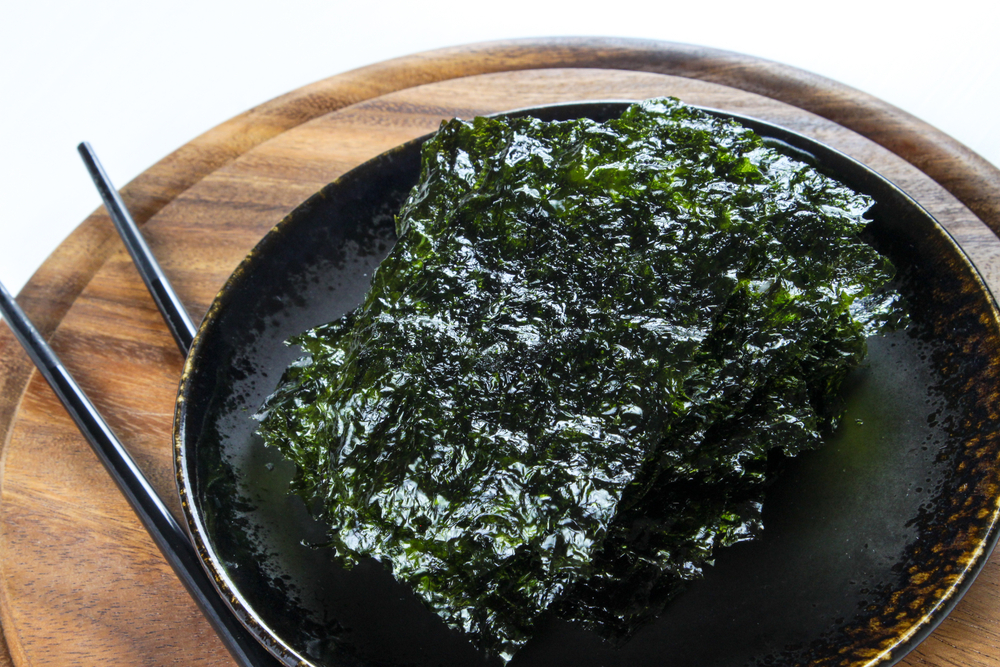
Photo by AROONA, Shutterstock.
You likely know nori as the deep green piece of seaweed that holds your sushi rolls together. It’s slightly sweet and nutty in flavor. Although it grows wild in cold coastal areas around Japan and the British Isles, commercial production has been prevalent in Washington and British Columbia over the last few decades.
Nori is sold in crispy sheets, either plain or toasted. If you’d like to try to use this vegetable in something other than sushi, you can use it as a garnish on top of salads, rice bowls or soups for an extra burst of umami. And, like dulse, nori makes a tasty snack when roasted as chips. More creative uses could consist of using it as a central ingredient in dips, as seen in this nori sour cream variation. You can also wrap them in a meat or meat alternative and fry them up. These deep fried nori-wrapped tofu or nori-crusted steaks are two starting points.
Carrageen Moss
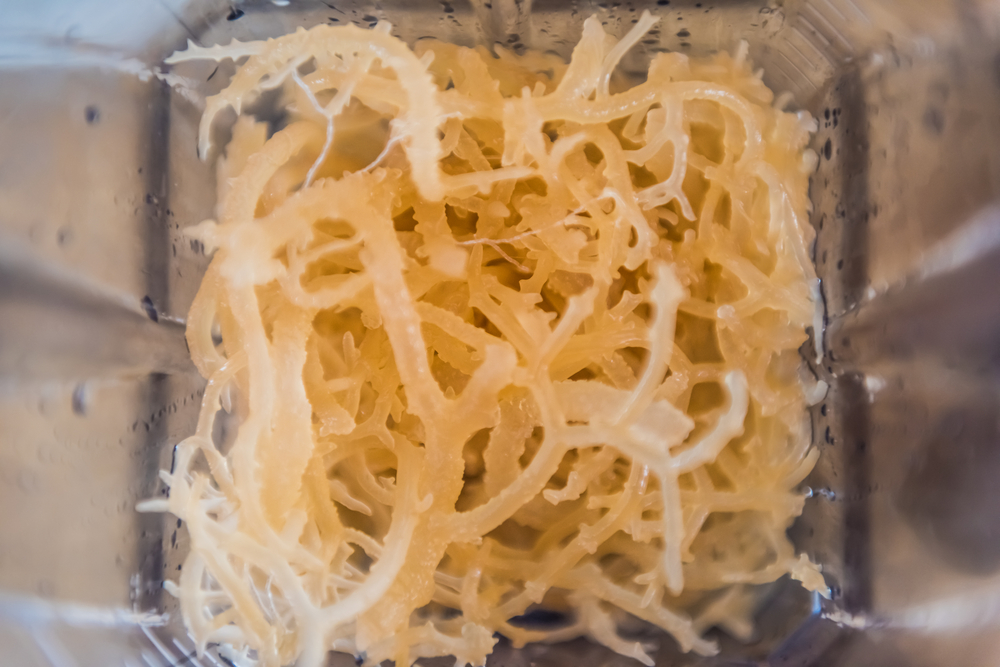
Photo by Andriy Blokhin, Shutterstock.
Carrageen moss, also known as Irish moss, is a type of algae that spawns on the Atlantic’s shorelines of North America and Europe. This plant—tree-like in appearance with its tiny branches—grows in shades of purple, red, green, yellow, brown and black.
When consumed raw, it has been described as having an earthy, fishy taste, comparable to that of oysters and clams. Despite this, it is generally utilized as a healthy thickener for smoothies and desserts such as tapioca and ice cream. If it is not being used in a powdered form, when raw, Irish moss can be made into a thickener by boiling or soaking it in its raw form. This also rids the plant of its fishy flavor.
Here are some recipes for Irish moss pudding and Irish moss smoothie to inspire you.
Salicornia
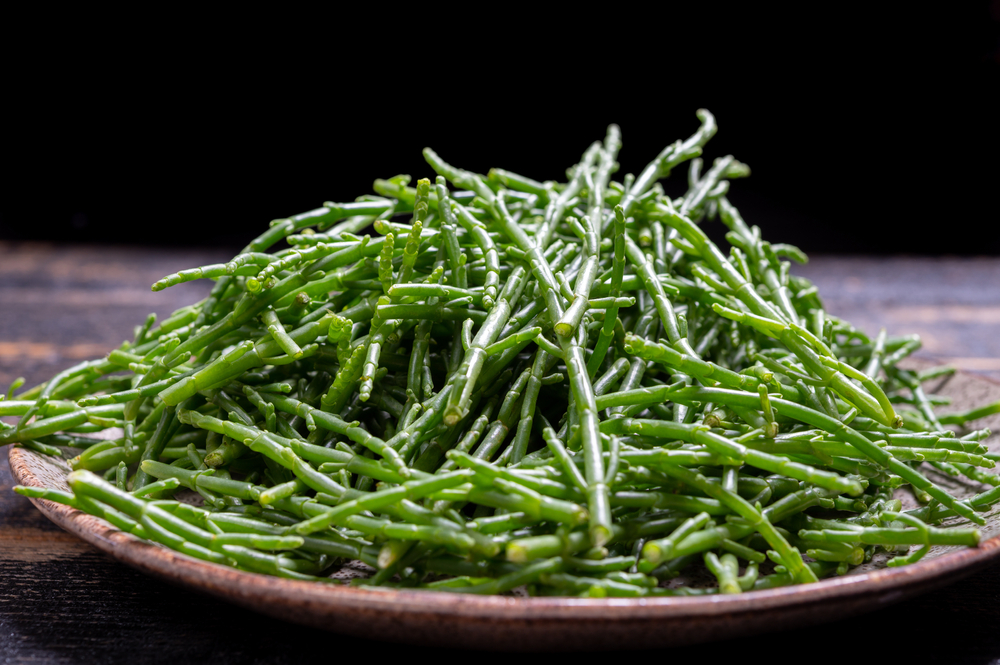
Photo by barmalini, Shutterstock.
Salicornia, commonly called sea beans or asparagus of the sea, is a succulent that grows in salty tidal pools, marshes and mangroves. It can be found in North America, South Africa, South Asia and parts of the UK.
These snappy green stalks are a crispy, crunchy and naturally salty addition to any meal. They can be consumed raw or cooked. Their brininess pairs well with other seafoods, as seen in this mussel and sea bean salad or this recipe with daikon and salmon. Alternatively, salicornia can be pickled or cooked on its own with garlic, olive oil, lemon juice and onion. One word of caution, however, would be to avoid pairing this vegetable with other salty ingredients.
Unlike the other sea vegetables provided on this list, Salicornia can be a bit more difficult to find. Look for it at your local farmers’ market during peak season from May to September, at specialty wild food stores or Whole Foods.
Ulva Lactuca
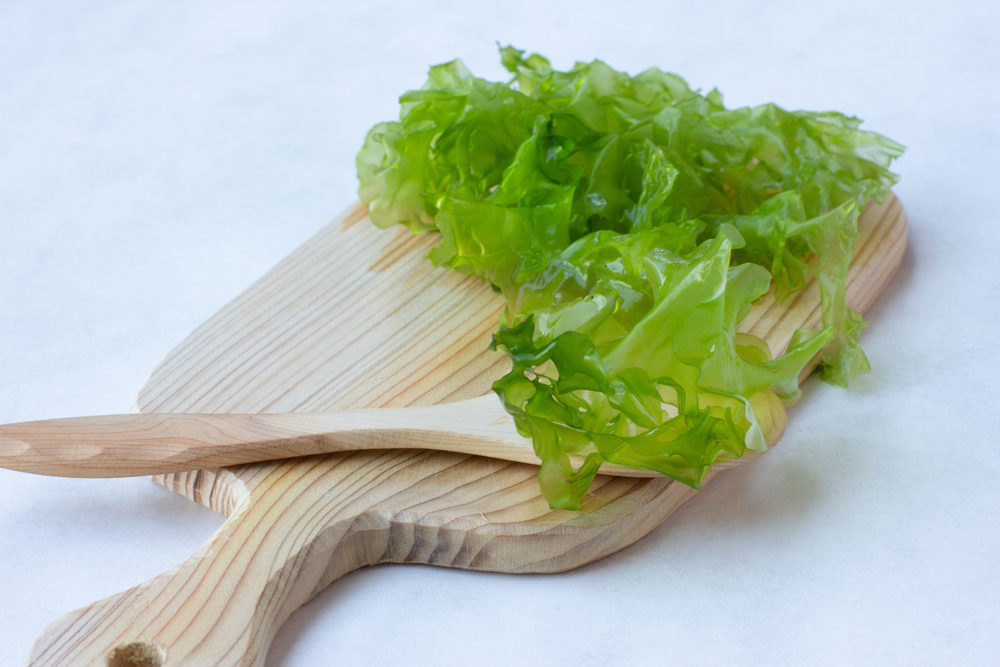
Photo by Tikiro, Shutterstock.
Ulva lactuca, otherwise known as sea lettuce, is a type of green algae that grows in intertidal and subtidal areas around Europe, North America, Central America, the Caribbean Islands, South America, Southwest Asia, Australia and New Zealand.
Sea lettuce, unsurprisingly, adds a briny flavor to recipes. When fresh or hydrated, it is crunchy and has a smooth, slimy texture. In its dehydrated state, it is light and flaky. Like the other seaweeds, it can be recovered to its natural state by soaking it in warm water for up to 15 minutes.
There are a number of ways sea lettuce can be consumed. Swap your regular lettuce for this ocean alternative. You can also use it as the base in a poké bowl, a crust for cooked salmon or an additive in potato leek soup for more umami flavor. When minced, sea lettuce can also be substituted for salt.
Very interesting!